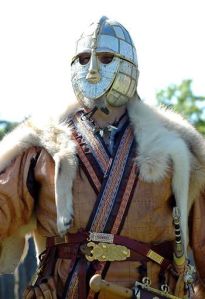 Gathering of the Argonauts, Attic red-figure krater, 460–450 BC, Louvre (G 341) (Wikipedia commons)
Gathering of the Argonauts, Attic red-figure krater, 460–450 BC, Louvre (G 341) (Wikipedia commons)
.
Periklis Deligiannis
.
Sometimes some of my articles are criticized by various scholars, historians, researchers and other readers around the world. These criticisms are sometimes positive, sometimes negative and sometimes malicious or aggressive/abusive. Except the latter, all of them are welcome.
The most recent criticism (negative criticism, but I think not malicious) was made by an editor and writer from New York, Jason Colavito, who wrote here a long article in which he presents a number of his ‘arguments’ based on which he is trying to question the conclusions of my two articles on the Argonautica. Although I generally do not answer to the criticism of others, I will make an exception for Mr Colavito because my vacations have already started and I have plenty of time (no, I’m not on a beach of a Greek island, but in the cement-city of Athens under a heat wave!).
Mr Colavito writes that “Deligannis makes a number of errors, beginning with the fact that he takes the developed Argonaut myth of the Classical and Hellenistic period as representative of the state of the story in the Archaic period and earlier, including all of the people and places of the standard version of the myth. There is no evidence that the full complement of fifty some-odd Argonaut celebrities drawn from all over Greece were original to the myth. Homer knows nothing of them, nor does Hesiod’s Theogony. The Hesiodic fragments contain episodes…”
It is obvious that the writer of the above paragraph/argument does not have a picture in depth, of the topography, geography and settlement history of the Mediterranean region in Antiquity, which probably plays the most important role in dating the Argonautic myth and mostly the chronology of its approximately final form. The myth of the Argonauts mentions several cities such as Peiresiae, Oechalia, Iolkos, Titaros, Alope, Tipha, Lerna, Pylos, Arene and others which in the Classical and Hellenistic period either no longer existed and no one knew their location, or had become insignificant villages, overshadowed by famous nearby cities. Additionally, the legend does not mention at all very important cities of the Classical and Hellenistic period of the same areas such as Chalkis, Eretria, Histiaia, Megara, Marathon, Eleusis, Corinth (Ephyra), Sicyon, Patrae, Orchomenos in Arcadia, Mantineia, Olympia and many others. And above all, no one in the Classical and Hellenistic period knew for sure the location of the Bebryces, Salmydessos, the Symplegades, not even of Colchis (Colchis’ location at the foothills of the Caucasus was a reasonable hypothesis made by the subsequent Greeks but not a certainty).
The Classical and Hellenistic Greeks knew only the location of Lemnos, Samothrace, and the territories of the Doliones and the Mariandyni, but specifically for the Mariandyni this is doubtful because the homonymous people of their time is not certainly identical to the tribe encountered by the Argonauts. All these peoples, figures and cities obviously belong to a very ancient period (Proto-Mycenaean period, archaeologically known as Middle-Helladic); so ancient that the Classical and Hellenistic Greeks knew them only as ‘empty names’ without location or personal history. I think it is very unlikely for the later and much later (Hellenistic) Greeks to attach the lesser legends of such ’empty’ place names, peoples and other to the ‘central’ myth of the Argonautica. After all, that central myth would be very reduced in its original form. I think that this evidence is enough to demonstrate that the Argonaut myth of the Classical and Hellenistic period is representative enough of the state of the story in the Archaic period and earlier, including all of the people and places of the standard version of the myth.












